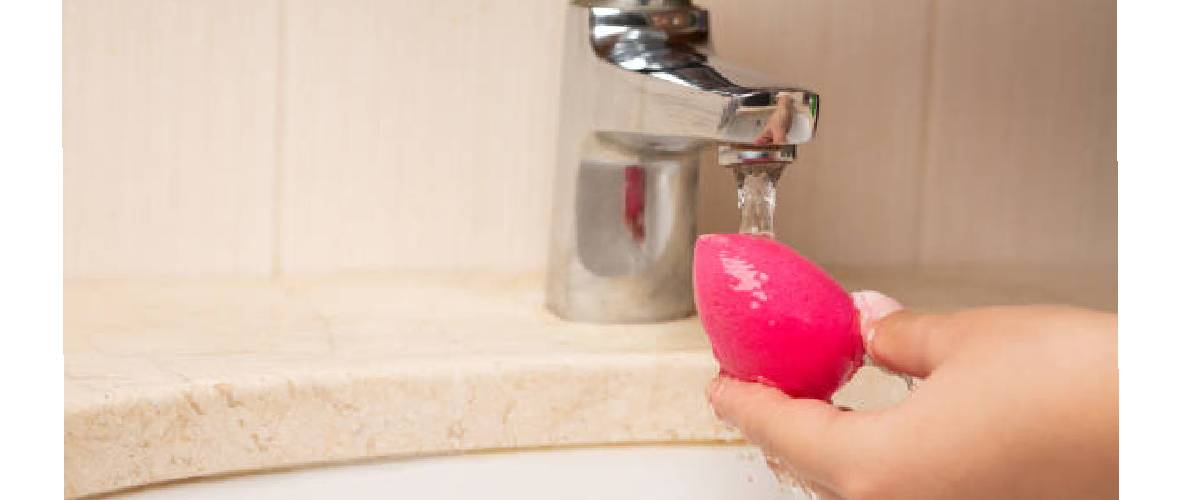Maintaining clean makeup sponges is essential for flawless makeup application and healthy skin. These tools can quickly accumulate bacteria and residue, making regular cleaning crucial. In this comprehensive guide, we’ll explore the best techniques and practices for how to clean makeup sponges, ensuring optimal hygiene and performance for your beauty routine.
Understanding the Importance of Clean Makeup Sponges
Understanding the importance of clean makeup sponges is crucial for maintaining healthy skin and achieving flawless makeup application. Makeup sponges are a breeding ground for bacteria, oil, and dirt, which can lead to clogged pores, breakouts, and skin irritations if not cleaned regularly. Moreover, using dirty sponges can compromise the quality of your makeup, resulting in streaky or patchy application. Therefore, incorporating proper hygiene practices into your beauty routine is essential to ensure both the health of your skin and the effectiveness of your makeup.
So, how to clean makeup sponges effectively? Start by wetting the sponge with warm water and applying a gentle cleansing solution, such as a mild soap or makeup brush cleaner. Gently massage the product into the sponge, focusing on areas where makeup residue is most concentrated. Rinse the sponge thoroughly until the water runs clear, squeezing out any excess product and debris. For stubborn stains or buildup, consider using a brush cleaning mat or silicone pad to help dislodge impurities. Finally, allow the sponge to air dry completely before storing it in a clean, well-ventilated area. By following these simple steps regularly, you can maintain the cleanliness of your makeup sponges and enjoy healthier, more radiant skin.
Daily Maintenance: Quick and Easy Cleaning Tips
Daily maintenance is key to keeping your living spaces organized and pristine. Quick and easy cleaning tips can help streamline your routine and ensure that your home remains fresh and inviting every day. Start by decluttering surfaces and putting items back in their designated places to maintain orderliness. Additionally, incorporating small tasks into your daily schedule, such as wiping down countertops, sweeping floors, and emptying trash bins, can prevent dirt and dust from accumulating over time. By tackling these simple chores regularly, you can enjoy a clean and comfortable living environment without the need for intensive cleaning sessions.
When it comes to personal hygiene, adopting daily maintenance practices is equally important. For instance, maintaining cleanliness in your skincare and makeup routine can promote healthy skin and enhance your overall appearance. One essential aspect of daily maintenance is knowing how to clean makeup sponges effectively. Begin by wetting the sponge with warm water and applying a gentle cleansing solution, such as a mild soap or makeup brush cleaner. Gently massage the product into the sponge, focusing on areas where makeup residue is most concentrated. Rinse the sponge thoroughly until the water runs clear, squeezing out any excess product and debris. By incorporating these quick and easy cleaning tips into your daily routine, you can ensure that your makeup tools remain hygienic and your skin stays radiant and blemish-free.
Deep Cleansing: Restoring Your Makeup Sponges to Their Former Glory
Deep cleansing is essential for restoring your makeup sponges to their former glory and ensuring optimal performance. Over time, makeup sponges can accumulate stubborn stains, bacteria, and product buildup, which can compromise their effectiveness and hygiene. To rejuvenate your sponges, it’s crucial to incorporate deep cleansing into your beauty routine regularly. Start by soaking the sponges in a mixture of warm water and gentle cleansing solution, such as liquid soap or specialized brush cleaner. Allow the sponges to absorb the solution, softening any hardened residues and loosening dirt and impurities trapped within the sponge fibers.
Once the sponges have soaked for a few minutes, gently massage them with your fingers to further dislodge debris and stains. Pay close attention to areas with heavy buildup, ensuring thorough cleaning throughout. Rinse the sponges under running water until the water runs clear, squeezing out any remaining soap and residue. For stubborn stains or lingering bacteria, consider using a brush cleaning mat or silicone pad to help agitate the sponge fibers and remove impurities. Finally, allow the sponges to air dry completely before storing them in a clean, well-ventilated area. By following these steps, you can effectively deep cleanse your makeup sponges, restoring them to their former glory and prolonging their lifespan for continued flawless makeup application.
Specialized Techniques: Tailoring Your Cleaning Method to Your Sponge Type
Specialized techniques are essential for tailoring your cleaning method to your specific sponge type, ensuring thorough and effective maintenance. Different types of makeup sponges require unique care to preserve their shape, texture, and performance. For example, traditional foam sponges may benefit from a gentle cleansing solution and regular squeezing to remove excess product and buildup. On the other hand, microfiber or silicone makeup sponges may require a more delicate approach to prevent damage to their specialized materials.
To clean makeup sponges effectively, start by identifying the material and structure of your sponge to determine the appropriate cleaning method. For foam sponges, wetting the sponge with warm water and applying a mild soap or specialized brush cleaner can help dissolve makeup residue and bacteria. Gently massage the cleaning solution into the sponge, focusing on areas with heavy buildup. Rinse the sponge thoroughly under running water, squeezing out any excess product and debris. For microfiber or silicone sponges, consider using a gentle cleanser specifically formulated for delicate materials to avoid damaging the sponge’s texture or integrity. By tailoring your cleaning method to your sponge type, you can maintain its quality and prolong its lifespan for continued flawless makeup application.
Drying Methods: Ensuring Proper Airflow for Optimal Drying
Drying methods play a crucial role in ensuring proper airflow for optimal drying of your cleaned makeup sponges. After cleaning your sponges, it’s essential to allow them to dry thoroughly to prevent the growth of bacteria and mold. One effective drying method is to air dry the sponges in a clean, well-ventilated area. Simply place the cleaned sponges on a dry towel or rack, ensuring that they are not stacked on top of each other to allow air to circulate freely around them. This method promotes natural evaporation, helping the sponges dry completely without the risk of moisture buildup.
Alternatively, you can use specialized drying tools designed specifically for makeup sponges, such as sponge holders or drying stands. These tools provide a stable base for the sponges to rest on while allowing air to circulate around them, expediting the drying process. Some drying tools even feature built-in ventilation systems or perforated designs to enhance airflow and prevent moisture retention. Whichever method you choose, ensure that the sponges are placed in a clean environment away from humidity and direct sunlight, which can affect their texture and performance. By following these drying methods, you can maintain the cleanliness and integrity of your makeup sponges, ensuring optimal hygiene and flawless makeup application.
Frequency: Establishing a Cleaning Routine
Establishing a cleaning routine is crucial for maintaining the hygiene and effectiveness of your makeup sponges. The frequency of cleaning depends on how often you use the sponges and the types of products you apply with them. As a general rule of thumb, it’s recommended to clean your makeup sponges after every use to prevent the buildup of bacteria, oil, and product residue. However, if you use your sponges less frequently, such as for special occasions only, you can extend the cleaning interval to every few days or once a week.
To establish an effective cleaning routine, consider incorporating it into your overall beauty regimen. Set aside dedicated time to clean your makeup sponges, ensuring that you have all the necessary cleaning products and tools on hand. Follow the steps on how to clean makeup sponges thoroughly, ensuring that each sponge receives proper attention and care. Additionally, keep track of the cleaning frequency to ensure consistency and prevent neglecting your sponges. By establishing a regular cleaning routine, you can prolong the lifespan of your makeup sponges, maintain their performance, and promote healthier skin.
Replacement: Knowing When It’s Time for a New Sponge
Knowing when it’s time for a new sponge is essential for maintaining hygiene and achieving optimal makeup application. Despite regular cleaning, makeup sponges have a limited lifespan due to wear and tear, product buildup, and the accumulation of bacteria over time. As a general guideline, consider replacing your makeup sponges every three to six months, depending on your usage frequency and cleaning habits. Signs that indicate it’s time for a new sponge include noticeable deterioration in texture, loss of shape or elasticity, persistent staining or discoloration that cannot be removed through cleaning, and an unpleasant odor even after thorough washing.
To ensure proper hygiene and makeup performance, it’s essential to inspect your sponges regularly and replace them when necessary. When replacing your makeup sponge, opt for high-quality options made from non-porous materials that are less likely to harbor bacteria and are easier to clean. Additionally, consider investing in a multipack of sponges to have backups on hand for convenient rotation and replacement. By knowing when it’s time for a new sponge and adhering to proper cleaning practices, you can maintain the health of your skin, achieve flawless makeup application, and prolong the lifespan of your makeup tools.
Conclusion: Mastering the Art of Makeup Sponge Cleaning
In conclusion, mastering the art of makeup sponge cleaning is essential for maintaining both the hygiene of your tools and the health of your skin. By understanding the importance of clean makeup sponges and incorporating specialized techniques tailored to your sponge type, you can ensure thorough and effective cleaning. Remember to establish a regular cleaning routine and adhere to proper drying methods to prevent bacteria buildup and prolong the lifespan of your sponges.
Knowing when it’s time to replace your makeup sponges is equally crucial for maintaining optimal makeup application and skin health. By regularly inspecting your sponges and replacing them as needed, you can prevent the spread of bacteria and ensure consistent results. With these practices in mind, you can master the art of makeup sponge cleaning, enjoying flawless makeup application while promoting healthier, more radiant skin.
Best tinted moisturizer with spf for mature skin

